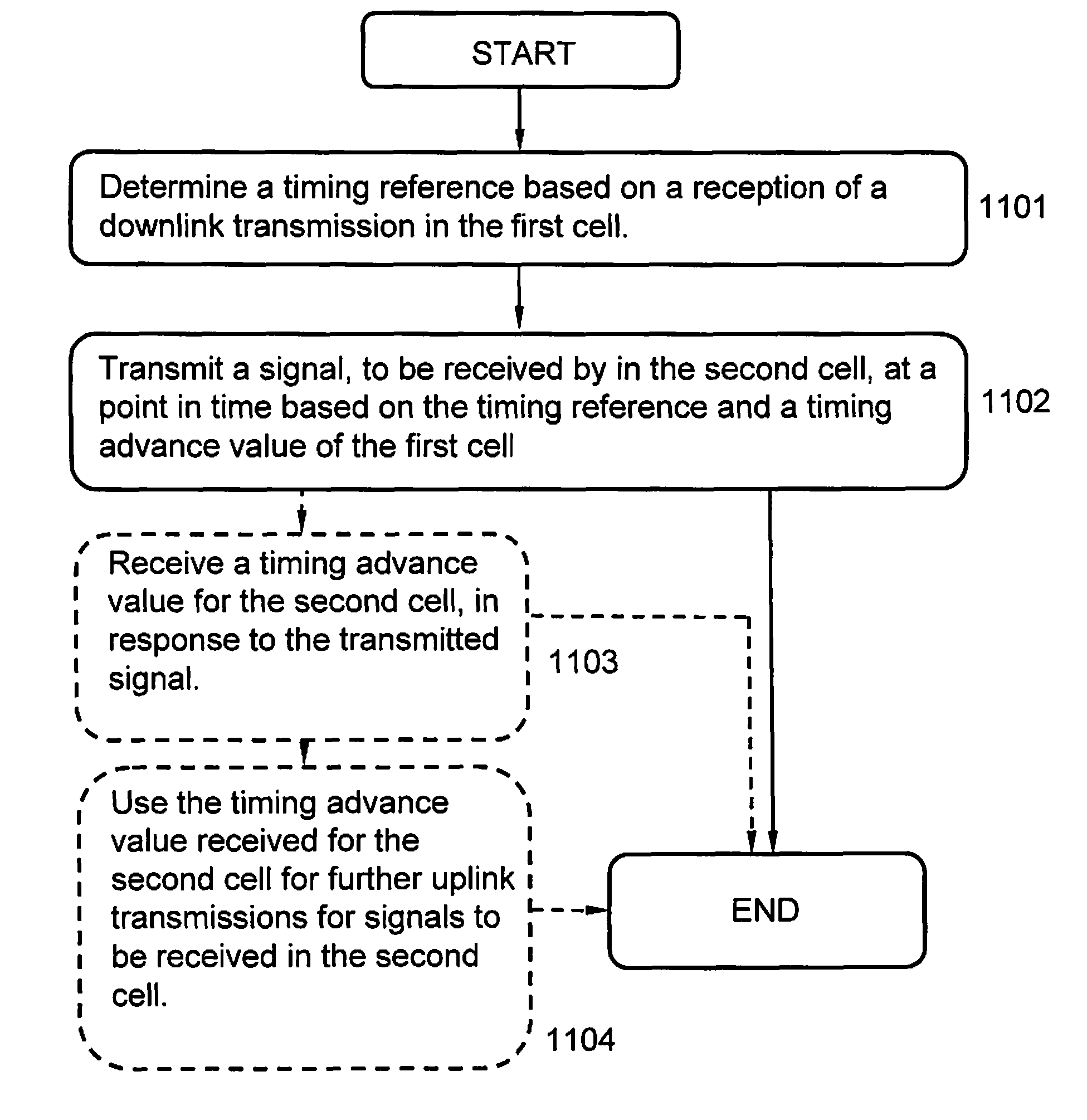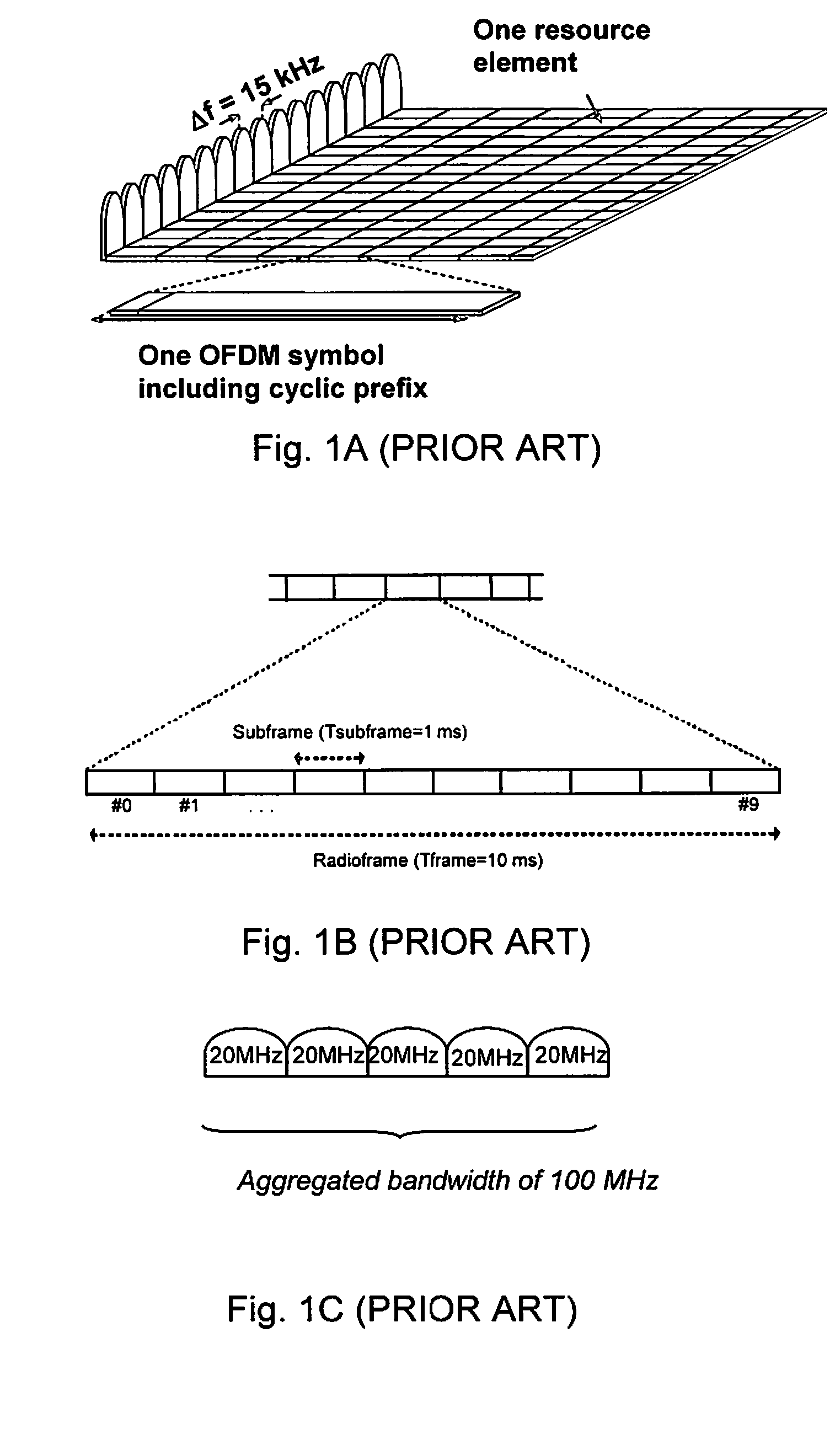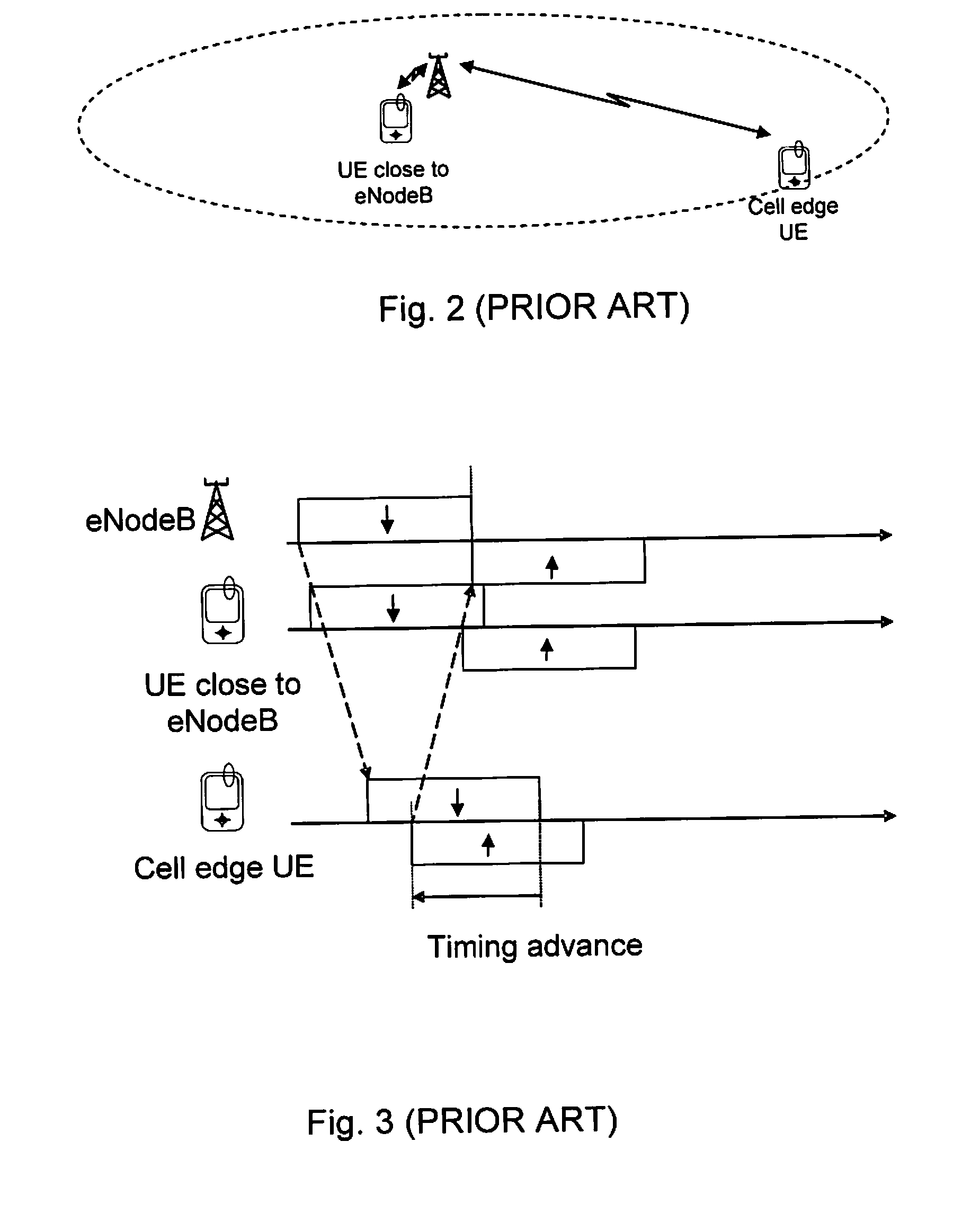Method and mobile node for determining a point in time for transmissions
- Summary
- Abstract
- Description
- Claims
- Application Information
AI Technical Summary
Benefits of technology
Problems solved by technology
Method used
Image
Examples
first embodiment
[0087] the mobile node 130 uses reception of DL subframe start in the first cell as timing reference. The mobile node 130 may therefore use the time of reception of a sub-frame in the first cell as timing reference.
second embodiment
[0088] the timing reference is the time of reception of a sub-frame in the first cell minus the timing advance value for the first cell. This timing reference will coincide with the UE's UL transmission on the first cell. The mobile node 130 may therefore use an UL transmission from the mobile node 130 to the first cell as timing reference.
third embodiment
[0089] the timing reference is the time of reception of a sub-frame in the first cell minus half the timing advance value for the first cell. This timing reference will coincide with the DL transmission on the first cell. The mobile node 130 may therefore use the determined DL transmission time of the first cell as timing reference.
[0090]Before performing the action 1101, the mobile node 130 may acquire / receive the timing advance value related to the first cell from first network node.
[0091]In all above embodiment the start of a DL subframe may be used as a timing reference. Equally, the end of a DL subframe or another specified location within a subframe may be used as timing reference. Accordingly the determination of the timing reference may be based on the start of the reception, the end or on a specified location within a sub-frame, of a sub-frame received from the first cell.
Action 1102
[0092]Transmit 1102 a signal, to be received in the second cell by the second network node 1...
PUM
 Login to View More
Login to View More Abstract
Description
Claims
Application Information
 Login to View More
Login to View More - R&D
- Intellectual Property
- Life Sciences
- Materials
- Tech Scout
- Unparalleled Data Quality
- Higher Quality Content
- 60% Fewer Hallucinations
Browse by: Latest US Patents, China's latest patents, Technical Efficacy Thesaurus, Application Domain, Technology Topic, Popular Technical Reports.
© 2025 PatSnap. All rights reserved.Legal|Privacy policy|Modern Slavery Act Transparency Statement|Sitemap|About US| Contact US: help@patsnap.com



